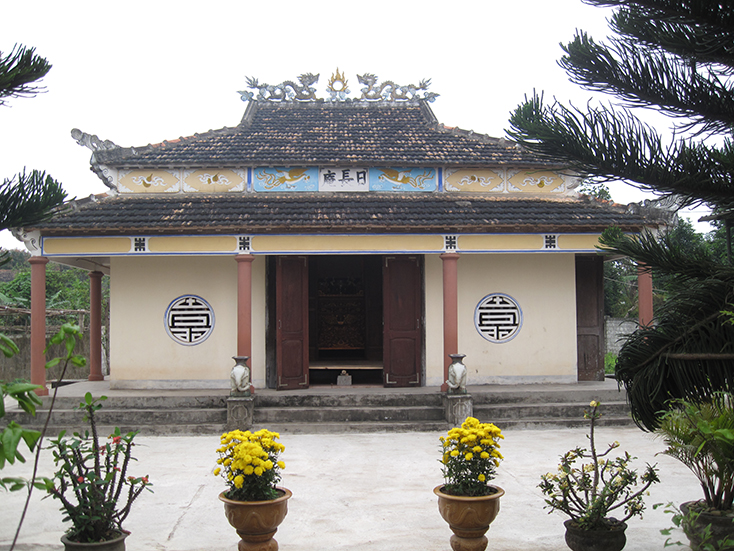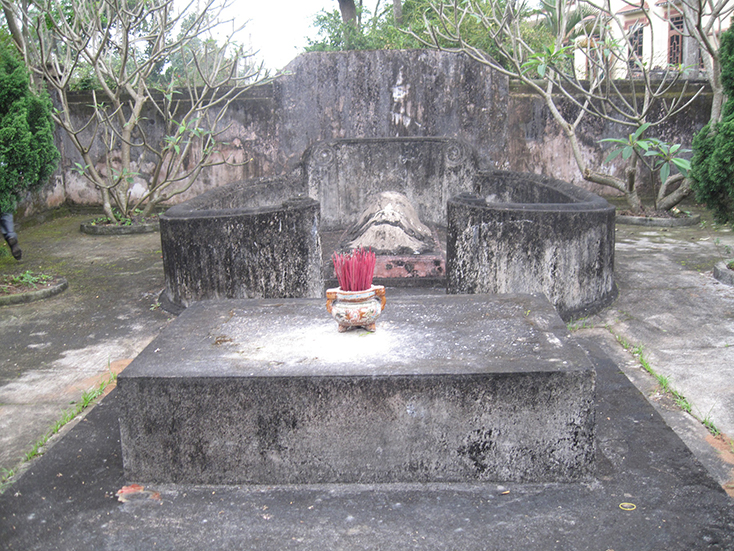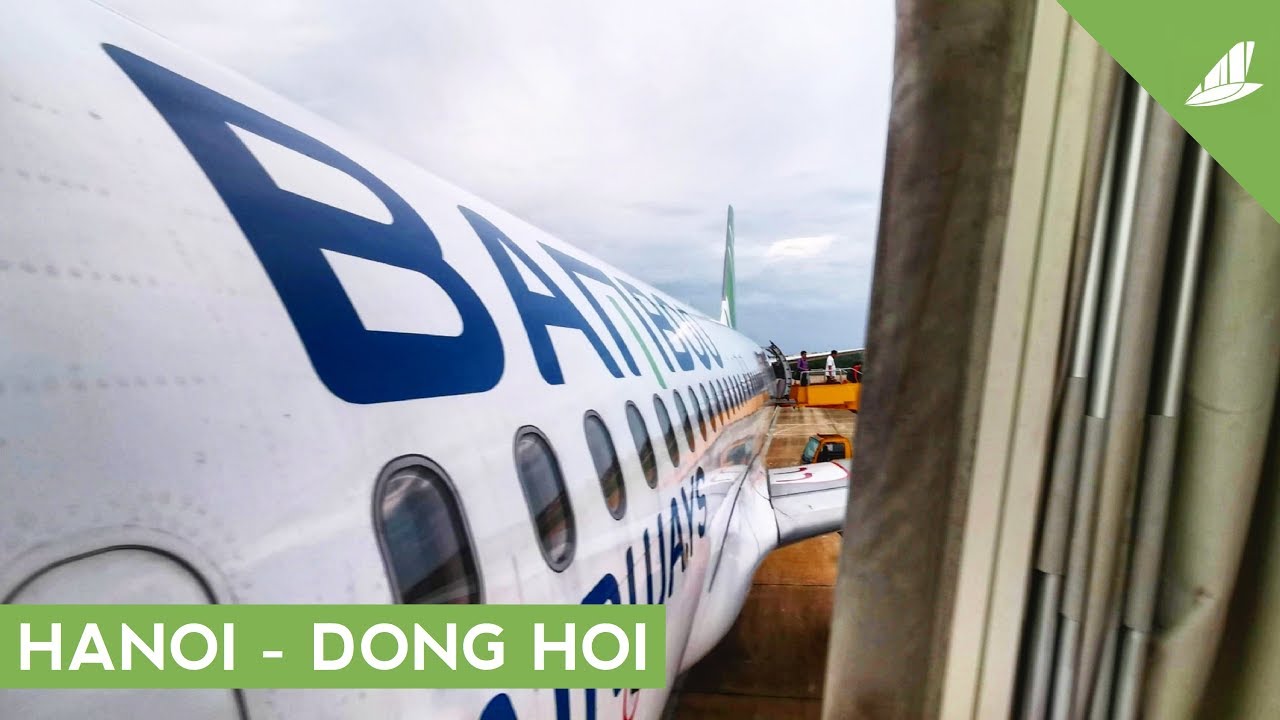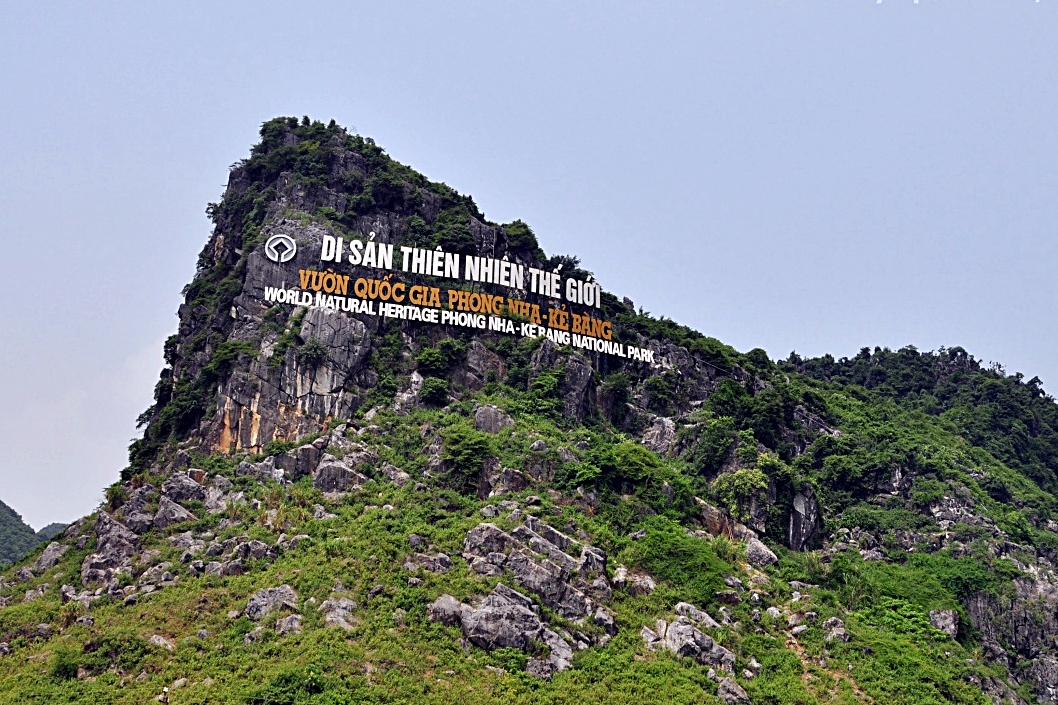14:05 - 16.09.2024
Historical site of Hoang Ke Viem tomb and church
13:59 - 16.09.2024
Hoang Ke Viem‘s tomb and church are located on a fairly large, airy plot of land, next to National Highway 1A, in Van La village, Luong Ninh commune, Quang Ninh district, Quang Binh province. Hoang Ke Viem was a scholar with a strong patriotism, a brave spirit, and a determination to fight the French to the end to protect national independence. His life and illustrious career were closely associated with the history of the Vietnamese people during the period of resistance against the French in the second half of the 19th century and the beginning of the 20th century, and was respected by the people and patriots.
Historical relic of Truong Son Martyrs Memorial Temple Long Dai Ferry
Hoang Ke Viem, also known as Hoang Ta Viem (Ta is the middle name given by King Minh Mang), with the courtesy name Nhat Truong, and the pen name Tung An, was born in Van La village, Van Dai commune, Quang Ninh prefecture (now Luong Ninh commune, Quang Ninh district, Quang Binh province), on July 21, Canh Thin year (August 29, 1820), and died on April 8, 1909. Hoang Ke Vien’s father was Mr. Hoang Kim Xan, who held the position of Bo Chanh of Khanh Hoa province under the Gia Long dynasty, then served as Minister of the Ministry of Justice, Ministry of Rites, and General Secretary under King Minh Mang, and was famous for his loyalty, integrity, and virtue. Hoang Ke Viem married the fifth daughter of King Minh Mang, Princess Huong La, but not long after, the Princess passed away.

Born and raised in a family with a tradition of studiousness, inheriting the intelligence and studious spirit of his parents, and living in a family that always valued filial piety and loyalty, taking it as a moral standard in life, Hoang Ke Viem soon matured on the path to success.
In 1843, he passed the bachelor’s exam and was appointed to the position of Tu Vu, with the title of Quang Loc Tu Khanh. In 1846, during the reign of King Thieu Tri, he became Lang Trung Bo Lai. During the reign of King Tu Duc (1850), his mother passed away. He returned to his hometown to mourn his mother, but before the mourning period ended, he received a summons from King Tu Duc to return to the capital to hold the position of An Sat of Ninh Binh province (1852). In 1854, he was promoted to Bo Chinh of Thanh Hoa province: in 1859, he was Bo Chinh and also the Governor of Hung Yen province; in 1863, he held the position of Governor of An Tinh (Nghe An – Ha Tinh). During this time, he contributed to security, economic development, and people’s livelihood. While serving as Governor of An – Tinh, Hoang Ke Viem made great contributions to the construction of canals and the development of 152 irrigation works. He and Nguyen Truong To called on and encouraged people to concentrate their human and material resources to clear the Thiet Cang canal (Iron canal), connecting waterway traffic between Nghe An and Thanh Hoa provinces to help develop production – something that the military governor Cao Bien of the Tang Dynasty (618 – 905) and later Ho Quy Ly (15th century) could not do.
In 1870, at this time in Bac Ky, there were many disturbances, the Black Flag, White Flag, Yellow Flag bandits were rampant, looting, harassing the people, the French plotted to occupy the Red River region to freely trade with Yunnan and South China (China), causing the social situation to be extremely chaotic. In that situation, the court appointed Hoang Ke Viem as the military governor of the four provinces of Lang – Binh – Ninh – Thai, directly commanding the Tam Tuyen army together with the military advisor Ton That Thuyet to take care of suppressing the rebellion and stabilizing Bac Ky. With the strategy of “fighting and persuading surrender“, after a short time, Hoang Ke Viem won over the leader of the Black Flag army, General Liu Yongfu, and joined forces to defeat the White Flag, Yellow Flag rebels, which the court’s generals had previously been unable to suppress.
Thanks to this achievement, he was awarded the title of Grand Scholar, Commander of the Tam Tuyen Governorate, and Commander of the Northern Military Affairs. During this period, there were many wars in the Northern Region, so the court established the position of Tinh Bien Su to guard the regions: Lang – Giang Dao, under the charge of Tinh Bien Deputy Envoy Truong Quang Dan, Doan Hung Dao, under the charge of Tinh Bien Deputy Envoy Nguyen Huu Do. Hoang Ke Viem was awarded the title of Tinh Bien Su, in charge of both regions.
In 1873, the French army under the command of Captain F. Garnier captured Hanoi and many other provinces in the Red River Delta. Hoang Ke Viem was appointed by the court as Commander of the Northern Military Affairs (the highest military position in the North) to command and supervise the defense and fight against the French. On November 19, 1873, the French government in the South sent Captain F. Garnier to Hanoi, attracting the Yellow Flag army to prepare to attack Hanoi. They sent troops to pacify the Red River Delta, and after a short time, the four provinces of Hung Yen, Hai Duong, Ninh Binh, and Nam Dinh fell into French hands, and soldiers in Ninh Binh citadel laid down their weapons and surrendered. At this time, Governor Nguyen Tri Phuong was seriously injured and died later, and the conflict in the North became even more tense.
Faced with that situation, Hoang Ke Viem was forced to quickly prepare to organize forces to fight back. As the highest commander in Bac Ky and the direct superior of Luu Vinh Phuc, he contacted the Black Flag army, bringing the Black Flag army from Hung Hoa to Son Tay to act as the vanguard against the French. To encourage the fighting spirit of the soldiers, Hoang Ke Viem promised to reward a lot of gold for each Frenchman killed, the number would increase according to rank. On December 18, 1873, the Black Flag army returned to Hanoi, setting up camp near the West gate of the city. Upon hearing this news, F. Garnier immediately opened fire, the Dai Nam soldiers and the Black Flag army were surprised and had to retreat. Under the command of Hoang Ke Viem and General Luu Vinh Phuc, our army organized an ambush force at O Cau Giay (Hanoi). The French continued to send troops to pursue and fell into the ambush of Hoang Ke Viem’s army, the commander F. Garnier was killed in the battle along with many French officers and soldiers. The death of F.Garnier put an end to the first invasion of Tonkin by French colonialists, Hanoi – Tonkin was returned to the Nguyen Dynasty.
Ten years later, in 1883, Hoang Ke Viem again commanded the Hanoi army and people to crush the French attack at Cau Giay. In March 1882, the Governor of Cochinchina sent Lieutenant Colonel H. Riviere to lead troops to the North under the pretext that the Hue court had violated the terms of the Giap Tuat Treaty (prohibiting and killing the Lord’s followers, not ensuring the passage of French merchant ships on the Red River, and continuing to have relations with the Qing Dynasty) to attack Hanoi citadel.
On March 24, 1883, H. Riviere commanded the French army in Hanoi to attack Nam Dinh. Taking advantage of this opportunity, Hoang Ke Viem ordered his troops stationed in Son Tay and Truong Quang Dan’s army in Bac Ninh, along with Liu Yongfu’s Black Flag allied army, to surround Hanoi. Hoang Ke Viem and the Black Flag army set up an ambush, waiting for the enemy at O Cau Giay. On May 19, 1883, when H. Riviere led the French army past O Cau Giay, they were attacked and surrounded by the troops of Hoang Ke Viem and Liu Yongfu from various positions. The French army was split in two and fled in disarray. Lieutenant Colonel H. Riviere, the commander of the French army, was hit by a bullet and died in battle. This event marked the second failure of the French colonialists’ invasion of Bac Ky. After the victory at O Cau Giay (Hanoi) on May 19, 1883, Hoang Ke Viem ordered his troops to continue building a base in Son Tay, determined to fight the French in Bac Ky as well.
At the end of 1884, on his way back to the capital through Quang Binh, Hoang Ke Viem submitted a petition to retire and live in Van La village “long dao dia” but the court did not accept it, and issued an edict forcing him to go to Hue.
In 1887, he was promoted to Crown Prince’s Junior Guardian and Privy Councilor.
In addition to his military talent, Hoang Ke Viem was also a man of letters, he wrote poetry, prose, and history. His works in Han Nom under the pen name Tung An were quite diverse and rich, including: Tru Thiet Son Phong Su Nhi Tan (summarizing the work of consolidating security in the border area combined with land reclamation and increasing production); Than Co Yeu Ngu (a textbook for infantry on how to use new weapons, how to make guns, preserve weapons with illustrations and exercises), Hoang Trieu Van Vu The Tac Le (Rules for martial arts examination schools): Phe Thi Tran Hoan (Recording about the reign of King Tu Duc), Tien Cong Su Tich Biet Luc (Recording the life and career of his father); Khon Y Luc (Recording the biography of Princess Huong La); Chi Chi Thi Thao, Van Van Tan, An Phu Trap Luoc, etc.

The merits, career of Hoang Ke Viem and his great contributions to the court and the country during his tenure as Commander of the Northern Military Affairs, especially the two glorious victories at O Cau Giay (Hanoi) against the French colonialists during a sensitive historical period, are truly worthy of pride, respect and admiration. Local people passed down the legends and myths about Hoang Ke Viem that: When he retired, the king granted him 4 acres of “first-class” rice fields to choose from, but he only chose 4 acres of wild grass land that the people of The Lai village used to raise cattle and buffaloes, then he mobilized his descendants and the villagers to reclaim another area of land nearby to turn it into two-season fertile rice fields. The people called it Dong Con Hoang that a thousand of seasons won’t lose. After the fields were cleared, he divided them equally for everyone to cultivate.
Grateful to him, the villagers built a temple to worship Tho Cong in the field to worship him every year. On the day the temple was opened, people burned incense and lit lamps to pray, but the incense did not burn or the lamps did not turn red. They found it strange and were afraid that they would have to send someone to greet him and worship him. From then on, such things never happened again during the worshiping period, so the villagers considered him to be more important than Tho Cong.
At the Workshop “Hoang Ke Viem in the process of modern Vietnamese history“. In the speech “The contributions of Hoang Ke Viem in the resistance war against the French colonialists in the late 19th century”, Associate Professor, Dr. Ho Khang – Deputy Director of the Vietnam Military History Institute, assessed that Hoang Ke Viem’s life and activities, regardless of his position, always showed a strong patriotism, bravery, initiative, and determination to fight against foreign invaders to the end to protect national independence. With outstanding achievements in the fight against the enemy to protect the country, Hoang Ke Viem became a typical military general and played a great role in the armed struggle movement against the French of our people in the second half of the 19th century.
The relic and church of Hoang Ke Viem are an important source of information for us to understand more about his life and career, about the period of fighting against the French to protect national independence of our people in the second half of the 19th century and the beginning of the 20th century. Through that, we can understand somewhat about the martial spirit and cultural traditions of his hometown – the ancient village of Van La – one of the “eight scenes” that have entered the folk subconscious of the people of Quang Binh: “Son – Ha – Canh – Tho – Van – Vo – Co – Kim”
Bài viết liên quan
12:36 - 10.03.2025
Netin Travel Hosts Mr. Tijmen from PUM for a Short-Term Training Course in Dong Hoi
13:44 - 16.09.2024
Phong Nha Cave – An irresistible tourist destination in Viet Nam
13:32 - 16.09.2024
Phong Nha – Ke Bang National Park
Related Articles
14:05 - 16.09.2024
Di chuyển từ Hà Nội đến Quảng Bình 3 cách phổ biến nhất
12:36 - 10.03.2025
Netin Travel Hosts Mr. Tijmen from PUM for a Short-Term Training Course in Dong Hoi
13:44 - 16.09.2024
Phong Nha Cave – An irresistible tourist destination in Viet Nam
13:32 - 16.09.2024
















